When designing a garden or landscape, structure is as important as color. Flowers come and go with the seasons, but evergreen plants provide the backbone of the garden, ensuring year-round beauty and form. They keep their foliage all year, offering color, texture, and definition—even in the depths of winter when other plants have gone dormant.
Evergreens are not just background fillers; they are essential elements in landscape design. They provide privacy, serve as natural windbreaks, define borders, and bring a sense of permanence and stability to outdoor spaces. With thoughtful placement, evergreen plants can transform any yard into a structured, balanced, and inviting landscape.
Here, we’ll explore five evergreen plants that add structure and appeal to gardens of all sizes. Each plant has been chosen for its resilience, visual impact, and versatility in landscaping.
1. Boxwood (Buxus sempervirens)
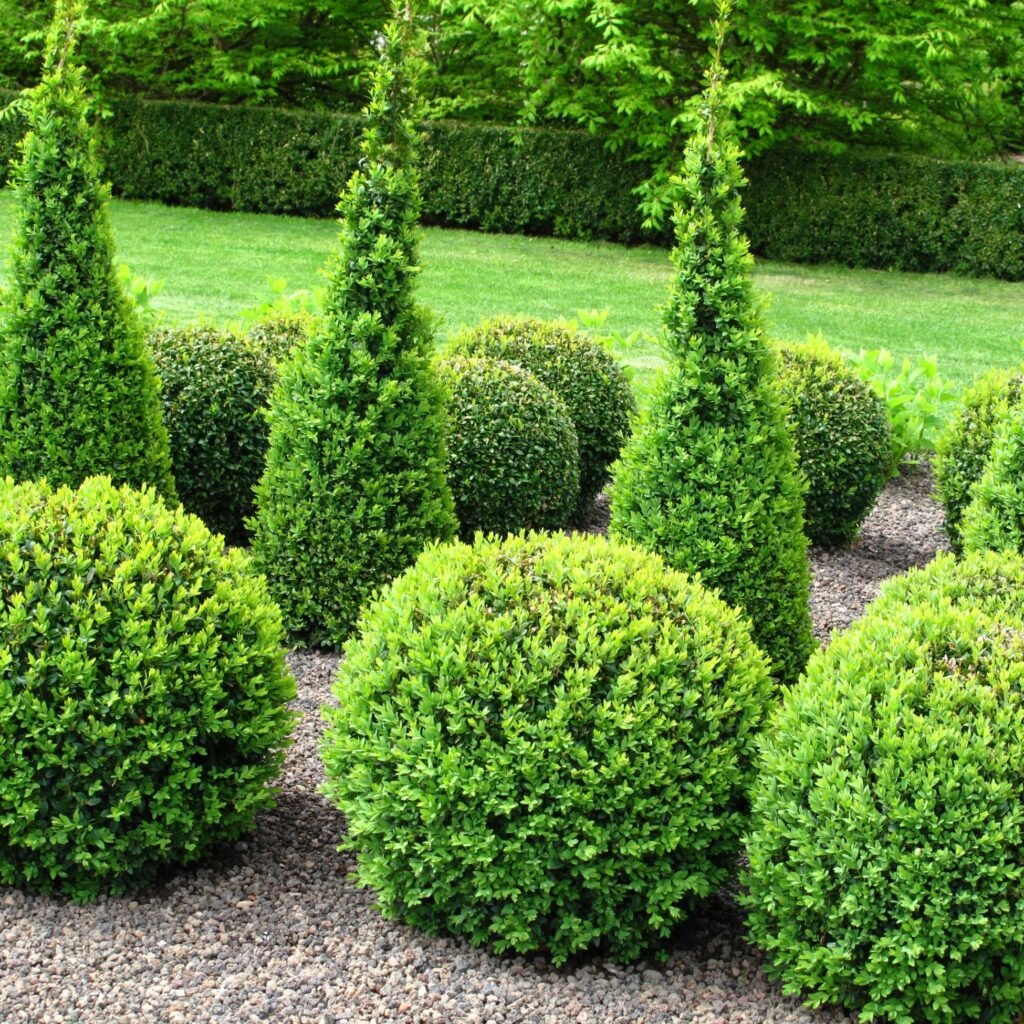
The classic boxwood is one of the most versatile evergreen shrubs, prized for its dense growth and ability to be shaped into hedges, spheres, or topiaries.
Features:
- Height/Spread: Varies from compact 2–3 feet to larger 10-foot varieties.
- Foliage: Small, glossy, deep green leaves that stay vibrant year-round.
- Growth Habit: Dense and slow-growing, perfect for formal gardens.
Why It’s Perfect for Structure:
Boxwoods are unmatched when it comes to providing geometric definition in the landscape. They’re often used to line walkways, frame entrances, or create structured parterres in formal gardens. Their evergreen nature ensures that the structure remains visible even in winter.
Care Tips:
- Thrives in full sun to partial shade.
- Requires well-drained soil but is adaptable.
- Regular pruning helps maintain shape and density.
Design Idea: Use boxwoods to create low hedges around flower beds. When seasonal blooms fade, the evergreen outline keeps the garden structured.
2. Holly (Ilex spp.)
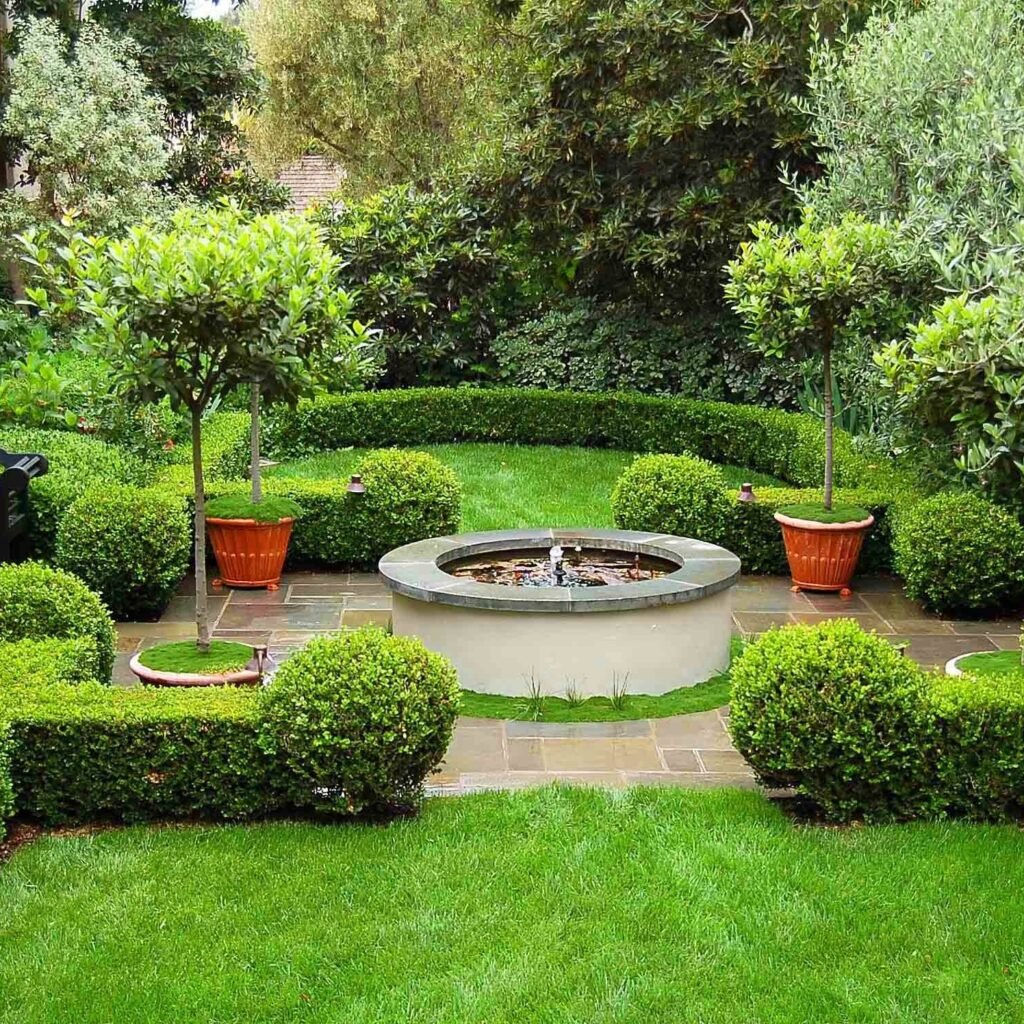
With glossy leaves and bright berries, holly offers both structure and seasonal interest.
Features:
- Height/Spread: Ranges from dwarf shrubs (2–4 feet) to large trees (over 40 feet).
- Foliage: Thick, shiny, often spiny leaves that remain green all year.
- Special Feature: Female plants produce bright red berries in winter when pollinated by a nearby male.
Why It’s Perfect for Structure:
Holly’s dense foliage makes it ideal for hedges, privacy screens, and foundation plantings. It provides visual weight in the landscape, anchoring softer plantings. In winter, when many plants are bare, holly shines with festive berries and deep green leaves.
Care Tips:
- Prefers full sun to partial shade.
- Grows best in slightly acidic, well-drained soil.
- Prune in late winter or early spring to shape and encourage bushiness.
Design Idea: Use holly as a living fence. Its evergreen leaves provide privacy, while the berries attract birds and add winter color.
3. Juniper (Juniperus spp.)
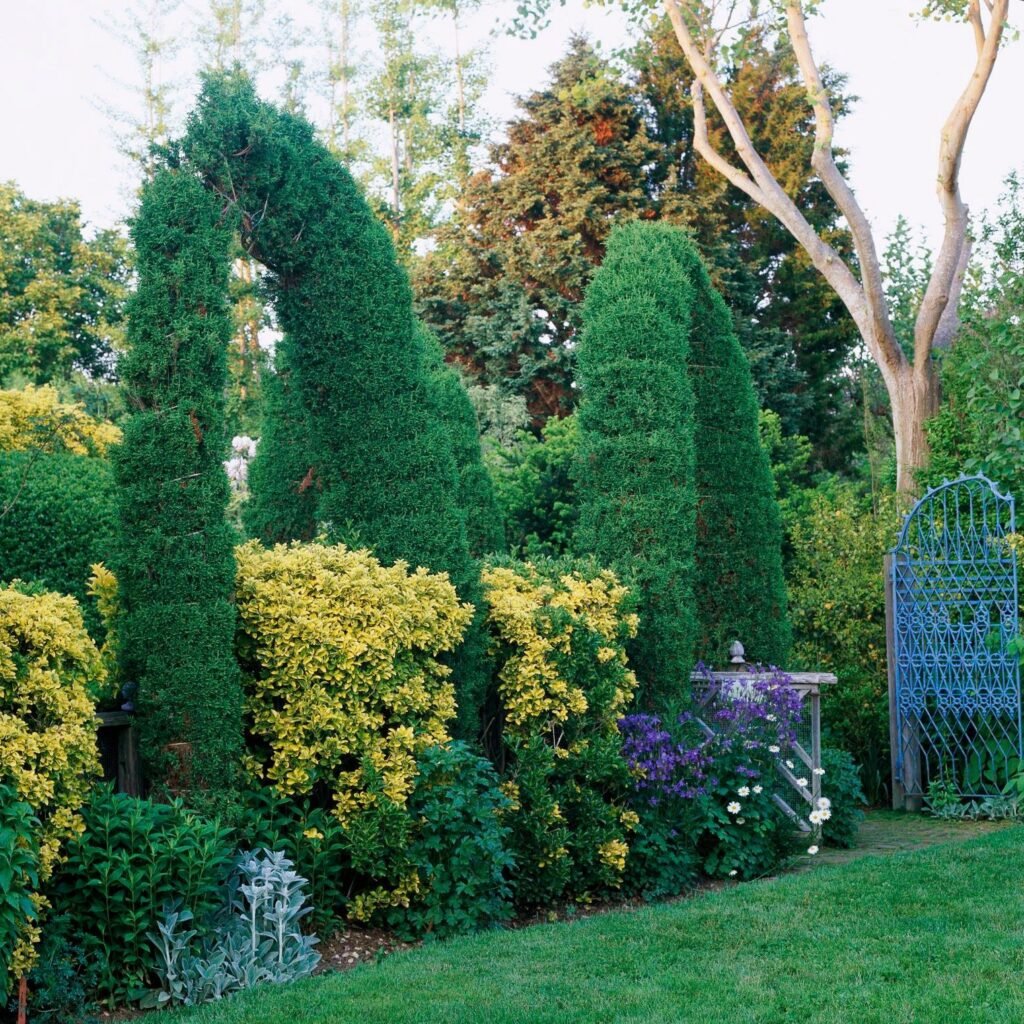
Junipers are incredibly diverse evergreens, ranging from groundcovers to tall trees. Their hardy nature and variety make them indispensable for structured landscapes.
Features:
- Height/Spread: From creeping varieties only a few inches tall to upright forms reaching 20 feet or more.
- Foliage: Needle-like or scale-like leaves in shades of green, blue, or gold.
- Special Feature: Many varieties produce attractive blue berries.
Why It’s Perfect for Structure:
Junipers are excellent for groundcover, hedging, and focal points. Their evergreen needles and wide range of growth habits allow them to fill structural roles—from edging garden beds to anchoring large landscape designs. Blue or gold varieties add unique color contrast to traditional greenery.
Care Tips:
- Thrives in full sun.
- Extremely drought-tolerant and low maintenance.
- Requires well-drained soil; avoid waterlogged areas.
Design Idea: Use creeping junipers to cover slopes or bare patches. They provide erosion control while adding lush greenery year-round.
4. Yew (Taxus baccata and hybrids)
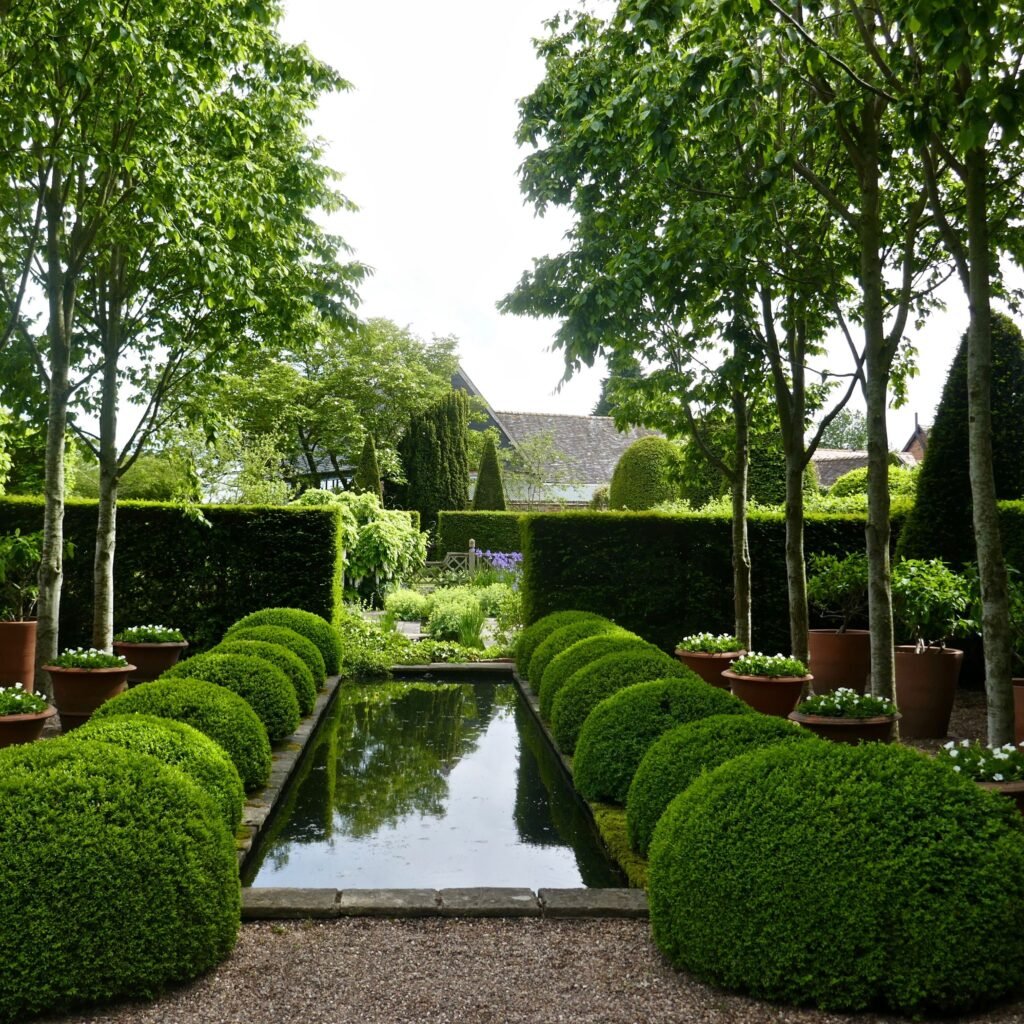
Yews are timeless evergreens with dense, dark foliage and a long history in formal garden design.
Features:
- Height/Spread: From compact shrubs to tall trees up to 50 feet.
- Foliage: Dark green, needle-like leaves.
- Special Feature: Female plants bear red, berry-like fruits (arils).
Why It’s Perfect for Structure:
Yews are extremely tolerant of pruning, making them ideal for hedges, topiary, and architectural shapes. Their dense growth creates strong visual lines in the garden. They are also long-lived, providing structure for generations.
Care Tips:
- Prefers partial shade to full sun.
- Grows well in well-drained soil but is tolerant of various conditions.
- Prune annually to maintain desired shape.
Design Idea: Plant yews as tall, dense hedges along property borders for privacy. Their evergreen foliage forms a living wall that stands strong all year.
5. Rhododendron (Rhododendron spp.)
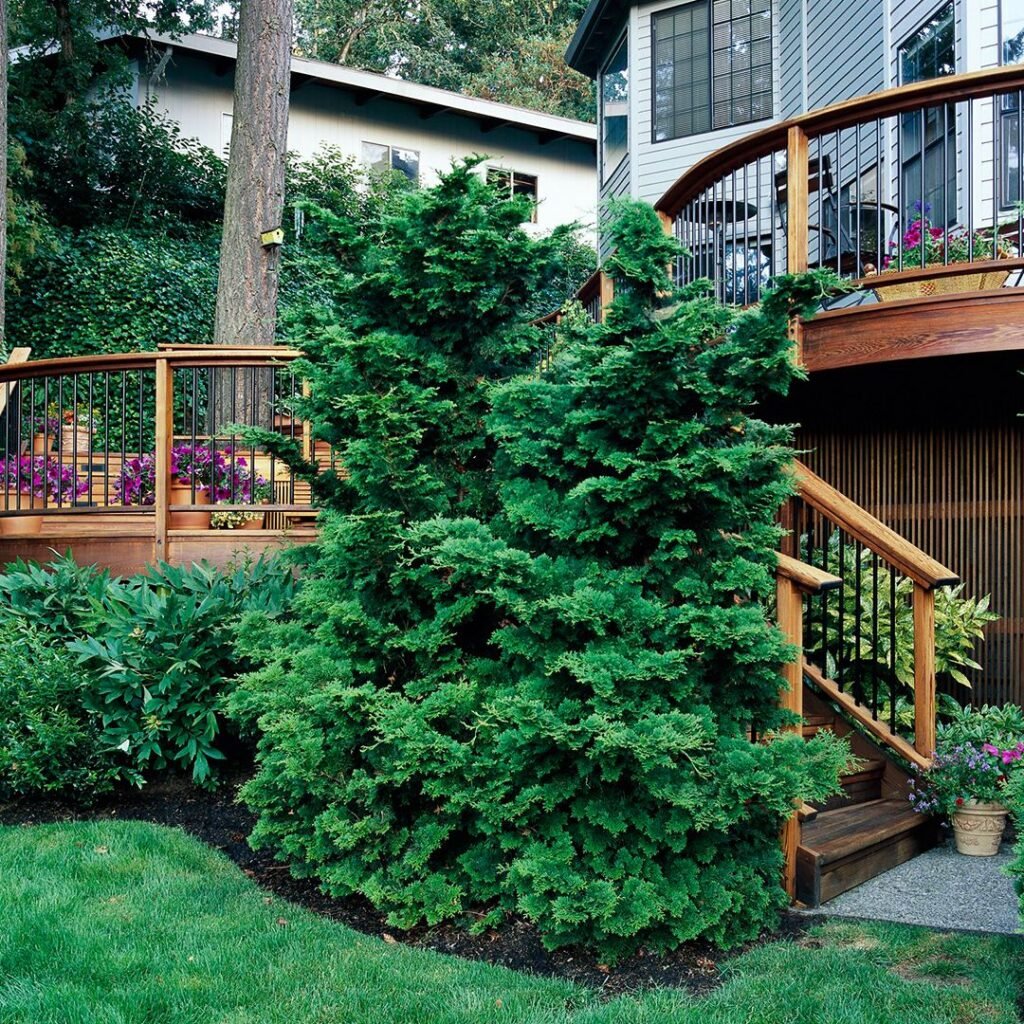
While often grown for their spectacular flowers, many rhododendrons are evergreen, making them valuable structural plants as well.
Features:
- Height/Spread: Most varieties range from 4–10 feet tall.
- Foliage: Large, leathery green leaves that persist through winter.
- Flowers: Blooms in spring with clusters of pink, purple, red, or white flowers.
Why It’s Perfect for Structure:
Rhododendrons provide a lush, leafy framework in landscapes. Even after flowering, their broad leaves keep the garden green and full. They are especially effective in shaded areas, where many other evergreens struggle.
Care Tips:
- Thrive in partial shade.
- Require acidic, well-drained soil rich in organic matter.
- Mulch roots to retain moisture and protect from temperature fluctuations.
Design Idea: Use rhododendrons as foundation shrubs near the home. Their evergreen foliage softens building lines, and spring flowers bring seasonal delight.
Designing with Evergreen Plants
Evergreen plants serve as the bones of the garden, creating form and stability. To maximize their impact:
- Balance Size and Scale – Use tall evergreens like yews for background structure and smaller ones like boxwoods for edging.
- Mix Textures and Colors – Combine glossy holly with fine-needled juniper for contrast.
- Provide Seasonal Interest – Choose plants that also offer berries, blooms, or colorful foliage.
- Use as Focal Points – A single specimen, like a sculpted yew or flowering rhododendron, can anchor a design.
- Ensure Year-Round Appeal – Strategically place evergreens where they’ll be visible in winter, such as near entryways or along pathways.
Final Thoughts
Evergreen plants are essential for any well-designed landscape. They provide structure, consistency, and visual appeal no matter the season. While flowers and deciduous plants bring temporary beauty, evergreens serve as the permanent framework that holds the garden together.
From the formal elegance of boxwood hedges to the lush greenery of rhododendrons, these plants ensure your landscape remains vibrant year-round. By carefully selecting and placing evergreens like boxwood, holly, juniper, yew, and rhododendron, you can design an outdoor space that is not only beautiful but also enduring and balanced.
Incorporating evergreens is more than a design choice—it’s a way of giving your garden longevity, structure, and timeless appeal. Whether you want privacy, formality, or simply year-round greenery, these five evergreen plants will bring lasting structure to your landscape.
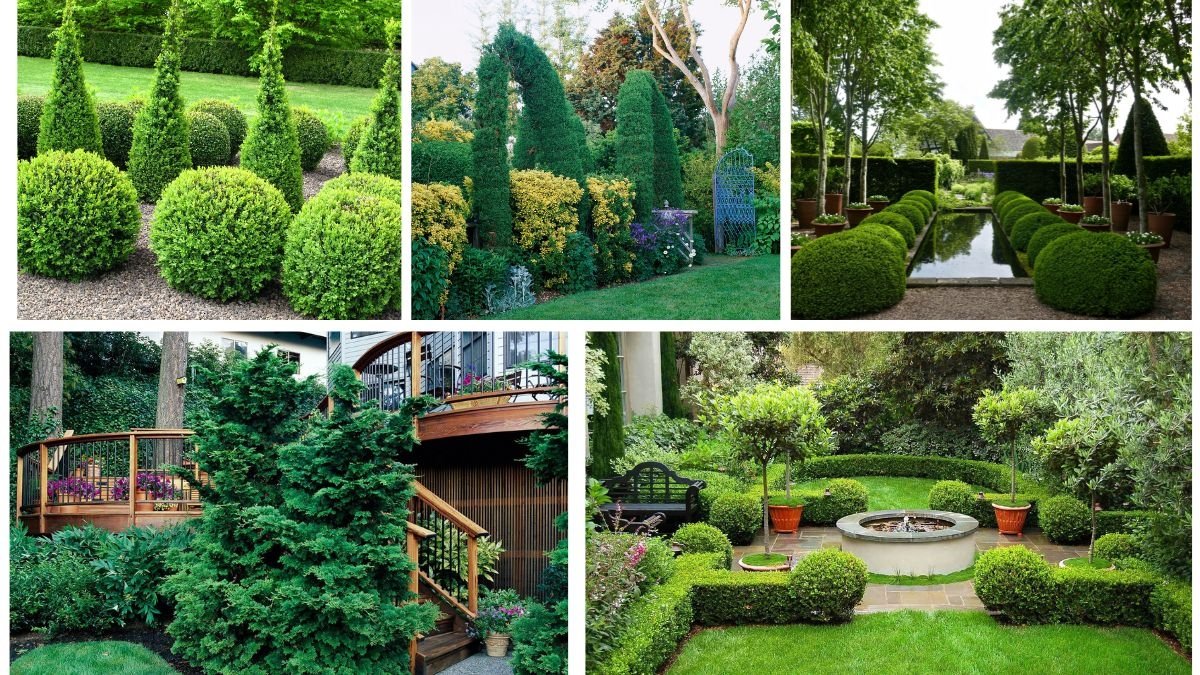
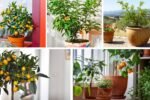

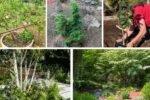
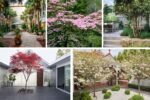
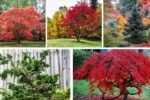
Leave A Comment